- Coalition criticised: short-sighted and not ‘sooner’, ‘cheaper’ or more ‘affordable’
- Not ‘sooner’, ‘cheaper’ or more ‘affordable’
- Alternative will not revolutionise the economy
Shadow Communications Minister Malcolm Turnbull is largely favoured by Australians (well atleast compared to Tony). He is generally consdiered highly innovative and forward-thinking, but unfortunately not in his own portfolio. Mr Turnbull thinks that Australians can 'get by with 25mbps'...oh how he is wrong! This article will provide an objective analysis and comparison of the two NBN plans. Ultimately it will be clear how poorly the Coaliton's broadband policy compares against NBN Co's plan.
The NBN is the nation's largest infrastructural project. It is expected to drive the Australian economy into the future. This is our opportunity to build a legacy and connect all Australians ubiquitously. Whilst this article may appear left-wing and biased, I am not a strict Labor voter. Through factually-based analysis, it is simply clear that Turnbull’s NBN alternative is merely a short-sighted political point. It will bring Australia very little long-term social and economic value.
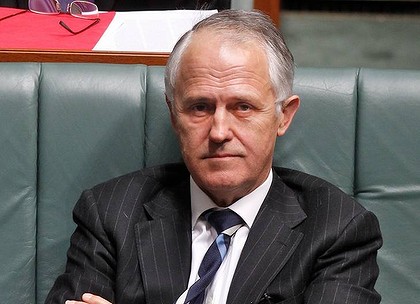
Currently, Newspoll’s two-party preferred results show the Coalition leading with 58% and the ALP far behind on 42%. If the Coalition lose the upcoming election, it will be because of their failure to produce a comprehensive NBN alternative. We city-slickers with download speeds of 20mbps may not realise the importance of a new and comprehensive broadband network, but it will be a deciding factor for rural voters.
Quick refresher: What does the current NBN plan entail
Once NBN is available, rural users will no longer be stuck with a limited number of providers, shocking service or sky-high bills. Under the current scheme, every Australian will have reliable access to telecommunications services.
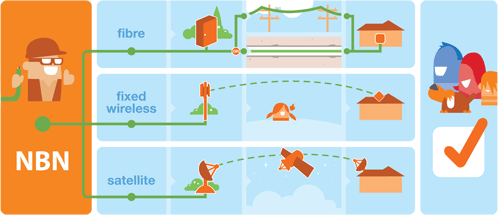
Fibre-to-the-premise (FTTP) for 93% of Australians, current speeds of up to 100mbps. Due to low population density, there will be a 4G fixed wireless network covering 4% of the population outside of the fibre footprint with speeds of 12 to 25mbps. The remaining very rural Australians will be serviced via two NBN satellites broadcasting similar speeds.
Dodo will no longer be the only alternative to Telstra Bigpond. NBN plans will be cheaper and speeds will be consistent. At the moment, Club Telco delivers the most competitive NBN plan at $35 per month.
What is the Coalition’s plan? Where are the problems?

The Coalition’s slogan ‘Better Broadband – Sooner, Cheaper and More Affordably’ is simply not true.
Better broadband? Not at all.
The current NBN plan will connect 93% of the Australian population with optic fibre to the home. This means consistent high speeds at a known minimum and infrastructure that will be able to keep up for at least the remainder of the century. The current maximum NBN speed is 100mbps, but FTTP infrastructure can support the speed of light!
The Coalition want to use completely different technology that relies on Australia’s existing and rotting copper network. Turnbull’s plan is based on fibre-to-the-node (FTTN) as opposed to the current plan’s installation of fibre-to-the-premise (FTTP).

FTTN is where broadband is delivered via fibre to a cabinet that may be several kilometres away from the premise. There, fibre is terminated, and broadband is delivered to the home via Telstra’s existing last mile copper network.

Turnbull favours FTTN because it is an easy way to phenomenally increase speeds. Many people in the outer suburbs of Sydney and Brisbane are receiving ‘broadband speeds between nothing and not very much’, with FTTN, these households will receive 50mbps ‘in a year or two’.
But is FTTN a better solution for all Australians? Not at all. Firstly, the Coalition will not be able to deliver ‘better broadband’ in a year or two. More on that later. Secondly, 50mbps will not be delivered across the board, this speed may not even be reached with FTTN. In the United Kingdom, the maximum advertised FTTN speed was 40mbps.
The main reason why FTTN is not a good solution affects rural Australians. Under the Coalition’s plan, ‘the premises reasonably close to the node (1000 metres or less) would be able to receive very high speed broadband over a fixed line without the need for fixed wireless. Additional nodes can be deployed where appropriate and cost effective’. FTTN works well in high-density cities, but not in small towns where there will be a small number of people per node and a lot of new nodes would be required to keep distance from node under 1km. FTTN is economically irresponsible in rural areas.
Beyond 1km from the node, the speed benefits of FTTN relative to ADSL2+ speeds are minimal. The following diagram actually shows that at 2km from the node, ADSL2+ speeds are similar to FTTN speeds (VDSL).
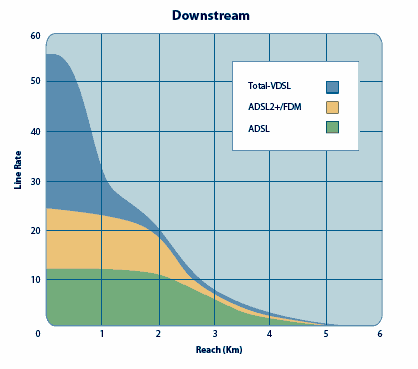
Whilst FTTN partially runs along optic fibre, the last mile will still be copper. If you think back to high school chemistry, you will recall that copper is highly reactive and glass is not. 80% of Australia’s copper network is over 30 years old. There are frequent reports of people who can’t make phone calls when it’s raining. Copper lines expire at 30 years, 80% of Australia's network is over 30 years old and 10 years ago Telstra announced that Australia’s copper network was due for replacement, yet the Coalition still want to spend billions of dollars acquiring it.
The current NBN will mean ubiquitous, crystal-clear, high-definition sound quality for telephones. However, with FTTN and out-dated copper wires, many Australians will still experience the problem of broadband and telephone dropouts and poor sound quality. And the benefits won’t be sufficiently felt those who need it most (rural Australians).
In terms of speed and quality, the Coalition’s plan is not ‘better’. Nor would it be able to support the array of benefits in healthcare, entertainment, emergency response and business operation. This will be discussed later.

Quicker certainly, and perhaps also sooner….but by how much Mr Turnbull?
Time is the most frustrating thing about the current NBN plan. It is a long-term project; many Australians won't have access to the ALP’s NBN until 2021. It’s a long wait that is worsen by reports of delays. The most recent report has been that NBN Co have admitted that they would miss their politically crucial June 2013 target by up to 44% and are three months behind schedule.
‘Sooner’ is a huge selling point for the Coalition. It’s also Turnbull’s most legitimate claim. Of course the Coalition’s plan will be quicker to execute. It’s a lot less labour intensive; cables will only be replaced to the node!

However, will the Coalition be able to complete their NBN plan before 2021. Let’s run through a projected time frame. If elected later this year, the Coalition could start building in 2015 (this is very optimistic particularly if the Greens regain the balance of power in the Senate). Construction could take 5 years (but again this is very optimistic). Straight up, this puts the finish date at 2020.
The Coalition’s NBN alternative may be completed just 1 year sooner. Not ‘much sooner’ as Turnbull suggests. Wait the extra year and Australia would be equip with the world’s leading broadband network – a legacy.
At the end of the day, the Coalition are working on a different timescale. NBN Co has had a big head start. The ALP were hyping a ‘super-fast national broadband network’ even before the 2007 election. It’ll be hard for a new project to catch up and even harder to get past the Greens and Independents who are huge supporters of the NBN.
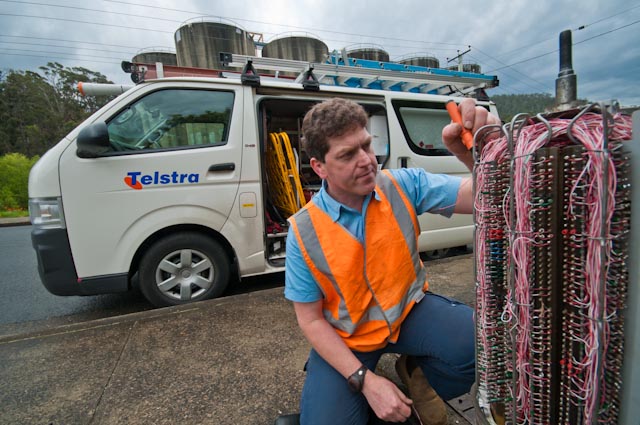
Similar to NBN Co, the Coalition’s plan will also experience delays. The job will also be new to contractors, they will experience the same kind of problems and a huge learning curve. At the end of the day, they are building an incredibly large broadband network. However, these issues may actually be worse for the Coalition due to the viability and potential for cost blowouts.
Remember that our copper network is over 30 years old. Before the Coalition acquire it, a substantial report must be performed.
The Coalition’s FTTN technology requires mains electricity power being connected to every single cabinet in the street. NBN contractors have already queried how this could possibly be achieved. Local power companies are the only ones who can install power to infrastructure. Some how, thousands of electrical engineers will have to be coordinated with NBN engineers. There will cause massive delays.
These FTTN requirements are worsened by Australia’s geography. Checks and installations must be performed across our entire landmass. Whilst FTTP is labour intensive in that more optic fibre must be laid out, it allows these two processes to be avoided. The Coalition have seemingly failed to mention how labour intensive their plan is actually is.
Given these factors, the Coalition’s alternative may actually take longer to complete than the current NBN plan.

Tired of waiting Mr Turnbull?
Cheaper…Why do we care?!?!
The NBN pays for itself!! It doesn't affect the budget and taxpayers are not paying for it! $37.4 billion dollars will be spent on the Australian NBN, and this has been largely borrowed through Treasury bonds and the money ultimately comes back to the government at a 7% profit.
Due to Australia’s AAA credit rating, we have been able to borrow at what is effectively the risk-free rate. The cost of the NBN project will be the interest repayment of $4 billion dollars over the life of the loan. This will be repaid by NBN users; everybody who purchases a fixed line connection. Taxpayer funds will be left untouched.

KPMG and McKinsey have performed a $25 million Implementation Study on the recently renewed corporate plan. The net cost is zero and NBN will pay for itself in at least four different ways.

So Mr Turnbull and Mr Abbott, there’s no use touting that the ALP's plan is an expensive waste of money. NBN will be paid for by the users, and the users want to pay for the world’s best broadband.
The actual cost of the Coalition’s alternative hasn’t been released. It will difficult to know without specific contract negotiations with third parties and between the government and NBN Co. Last year, Malcolm Turnbull announced on Newsline that the Coalition’s plan would cost $15 billion all together. Citi have released a similar figure of $16.7 billion.
However, Communications Minister Stephen Conroy has rejected the $15 million value. According to Conroy, the figure does not account for the cost of securing the use of Telstra’s copper network between the node and the premises.
We don’t know what Telstra would charge, but if the Coalition were to build a new copper network to the premises, this would cost $40 billion dollars. Obviously, given the age and quality of Australia’s network it won’t be this much. The Coalition claim to expect a cost of $4 to 5 billion.
However it is worth considering that Telstra is a company that always acts in favour of its shareholders as opposed to society. To lease the ducts which house the copper, Telstra charged NBN Co $9 billion dollars. With this in mind, commentators predict a cost of $20 billion for the copper last mil.

The Coalition’s NBN plan could cost anything from $19 to 35 billion. In terms of the upfront costs, the Coalition’s plan can be expected to be cheaper. However, how much cheaper is it really, which plan brings more value to Australia and how important is the cost?
The ongoing costs of NBN are often forgotten, but need to be considered. NBN Co CEO Mike Quigley has warned that while the Coalition’s alternative will be cheaper to deploy in the short-term, but it will cost more in the long-term. Power bills, maintenance and the inevitable upgrade all need to be considered.
Analysts at BIS Shrapnel estimate that the Coalition’s FTTN plan will cost between $600 million to $700 million more to maintain per annum.
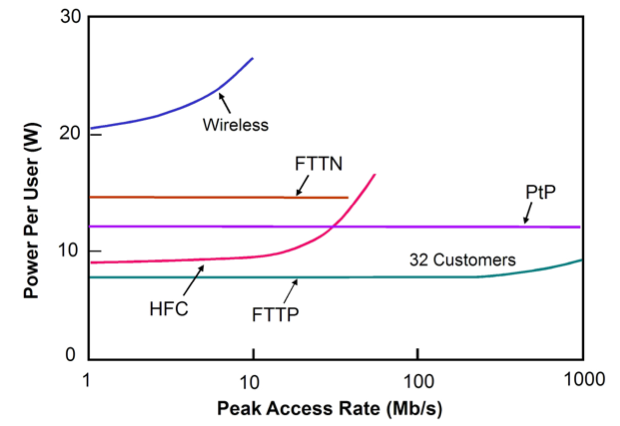
Currently, telecommunications networks are attributed to 1-2% of Australia’s energy consumption and the NBN is expected to increase this figure. According to Professor Rod Tucker from the University of Melbourne’s Institute of a Broadband-Enabled Society, FTTN consumes two times more electricity than FTTP. Two to three new power stations will need to be constructed to support this new consumption. In terms of energy efficiency and the price of carbon, FTTP is favoured as it consumes less energy than any other broadband models.
The largest expected cost is associated with the inevitable upgrade from FTTN to FTTP. The Coalition’s FTTN plan will inevitably be an interim step. Ultimately, to keep up with the rest of the world, Australia’s network must be upgraded to FTTP. This will last into the next century. According to Turnbull, an upgrade would cost $21 billion dollars.
Overall, it is clear that the overall cost of the Coalition’s NBN alternative will be far higher than that of the ALP’s current plan. Why not make a larger initial investment and receive the best broadband sooner?
More affordable? Perhaps, but how will this affect the Federal Budget?
The current plan aims to make broadband affordable through a cross subsidy in which ISPs would be charged a higher price in urban areas and less in rural areas. A fundamental principle underlying the ALP’s NBN initiative is that a person’s ability to access broadband services should not be dependent on where they live.
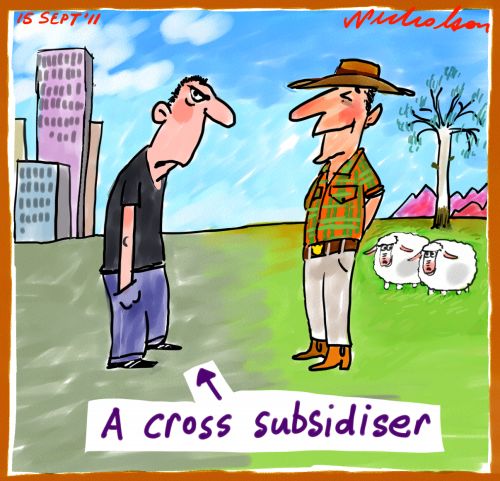
The Coalition have vowed to abolish the cross subsidy. Instead Turnbull will ‘ensure that support for the bush comes form a clearly defined subsidy so that everybody knows the actual cost of ensuring equality of access’. Cities will not be overcharged.
So where will this subsidy come from? This has not been disclosed. Will it cut into taxpayer funds? What would it take from our budget? What will the opportunity cost be? These questions are unknown.
The Coalition’s subsidy for rural areas may make broadband more affordable across the board. But at what cost? Little has been revealed in terms of affordability, but it may not be a better solution for Australia.
Regardless, both schemes will be more affordable than what Australians are currently paying. So far, Club Telco has released the cheapest NBN plan. $35 per month for 10GB of download.
What are the other benefits of the current NBN that FTTN may not be able to support?

Telehealth – what is it?
Telehealth is the delivery of health-related services and information via telecommunications technologies. The scope for telehealth will be grossly widened on the NBN FTTP network. Primarily because the high and reliable download and upload speeds will allow for comprehensive medical analysis, diagnosis and monitoring.
With telehealth, Australians will be able to communicate with health professional via the television. Through Microsoft Kinect technology, doctors can monitor their patient’s movements and recovery remotely. ‘Band-aid’ sensors have been produced for remote monitoring and will transmit physiological data.

This technology will eventually save a lot of money and lives. It may be the solution to Australia’s aging population. This is particularly relevant to elderly people and those living in remote areas.
Multicast and Ultra High Definition 4K TVs
FTTP will revolutionise every household’s television experience. We would be able to access the bulk of the developed world’s TV channels as well as on-demand and other services.

Multicast enables content to be transmitted simultaneously to multiple parties through a single stream as far into the network as possible before being replicated and forwarded to potentially thousands of end users. Current TV broadcasts are one-signal-per-channel: that signal gets sent to a broadcast tower, transmitted using radio waves, and received by the TV. This is called unicast.
Multicast is technically available with providers like TPG and iiNet, however Australia is yet to have a wholesale multicast distributor. The NBN will create nationwide demand for multicast viewing. The ‘one to many’ transmission model will be more efficient and economical for Australia.
There will be greater opportunities for innovation and viewing will become more interactive. Additional benefits are higher quality service, more accurate audience measurement, localised advertising and greater choice of premium channels.
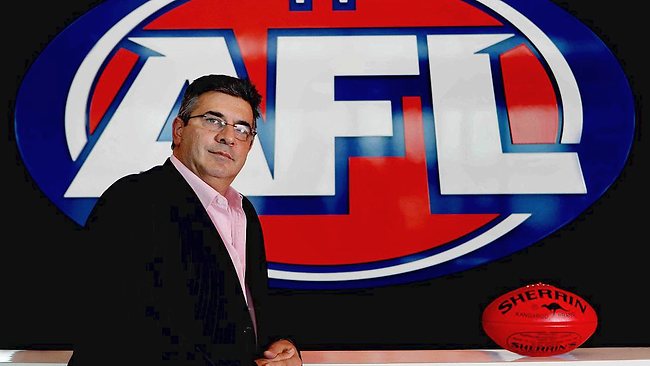
AFL boss Andrew Demetriou has actually hinted that the AFL is in talks with NBN Co regarding their use of multicast technology. The AFL could be the first major Australian sporting body to sell footage of matches directly to fans via high-speed broadband. Multicast is expected to rival pay TV providers such as Foxtel.
Telecommuting – save time and money!
The quality and reliability of NBN will mean that more people will be able to work from home and away from the city. Australia is a beautiful country and NBN will allow more people to balance a great lifestyle with work.
NBN will also boost and innovate Government services. With everybody in Australia having access to high download and upload bandwidth, Australians will be able to communicate with Centrelink via the television as opposed to commuting to the office. Not only will this cut down travel time, but also the notoriously long wait. Many of the offices could also be outsourced to low-cost regional locations. The only people who would need to visit the offices are those who choose not to subscribe to an NBN plan.
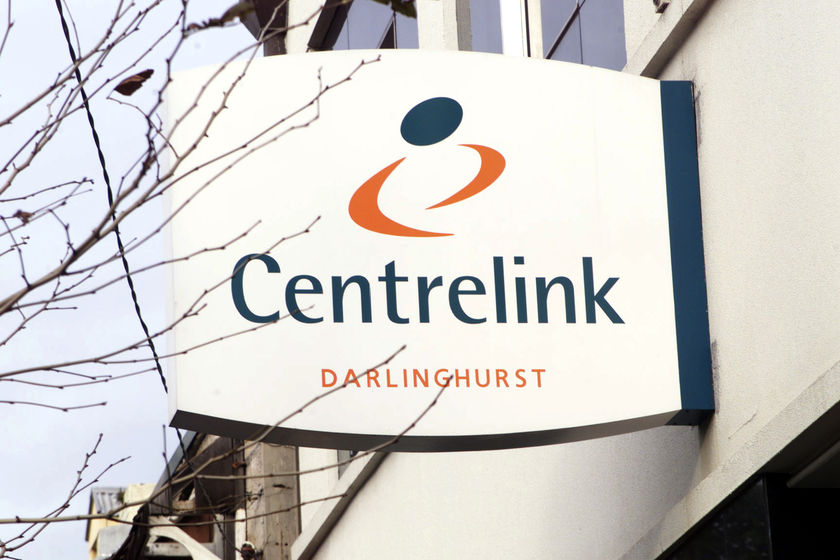
Concluding Summary
It has made sense for a private incumbent like Telstra to overuse their copper networks to the last sweat because it owns it. The copper network is a sunk cost for Telstra, aside from maintanence, it costs Telstra zero to continue operating upon it. Now we are in a situation in which the Government is willing to invest and upgrade Australia's infrastructure for greater social and economic value. This is Australia’s opportunity to lead in innovation as opposed to constantly playing catch-up. Why would we upgrade to FTTN when it's merely a cheap, short-term and socially inferior option that Telstra would choose?
The NBN will allow Australia’s economy to flourish. NBN has the potential to be Australia’s solution to our aging population and will allow our economy to head towards digital innovation; cloud and greater productivity. The NBN will serve as the backbone of the Australian economy. No longer will Australia have to rely upon mining.
It’s sad that Australian politics is in shambles. The ALP have a great NBN plan. It’s not perfect; delays are continually being rolled out. However, it is innovative and it is a far better plan than that of the Coalition. It’s looking like power will be returned to the Coalition at the next election. We just hope that their broadband plan doesn’t just seem like a short-term political point, but actually is. It should not be implemented. It brings Australia very little value, it will be a waste of money and time.
If the Greens regain the balance of power in the Senate and the Independents are re-elected, the Coalition's policy will not pass. The Greens and Independents are huge supporters of the ALP's NBN.
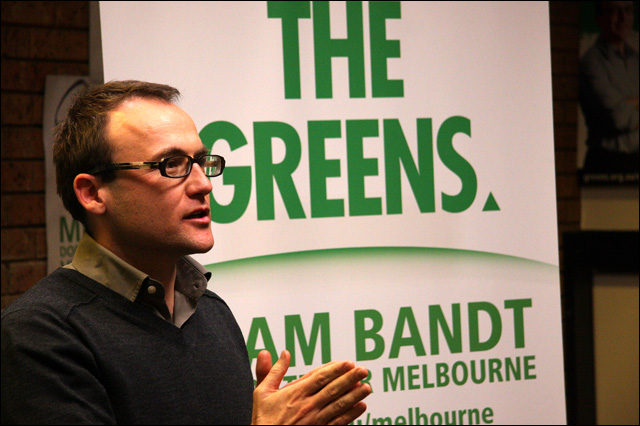
Hopefully if elected, the Coalition will only make positive changes to the NBN plan. Perhaps reduce delays. Despite what the overly-negative opposition say, the current NBN should be supported. It will lead Australia into the next century!
Here’s a brief recap of what this article has covered:
- FTTP is far superior technology to FTTN. The Coalition’s FTTN will not resolve many of Australia’s telecommunications issues.
- The current NBN plan costs taxpayers nothing. It is funded by Commonwealth borrowed funds; NBN is an investment that will return a 7% profit to the Government. The Coalition should not be touting cost as a problem.
- The Coalition’s plan may not be completed before the current NBN. Different timescales and the FTTN is subject to many problems.
- NBN Co’s cross subsidy pricing will make NBN more expensive for city customers, but it won’t touch taxpayer funds. We don’t know where the Coalition’s subsidy will come from.
- Many new applications on FTTP: telehealth, multicast television and telecommuting. FTTN will struggle to support these applications.
The Coalition’s plan is different on every level, and unfortunately appears inferior by all measures. The NBN is something that many Australians have heard of but don’t know much about - high awareness, but low familiarity. It’s unfortunate that the rollout delays have been so heavily publicised and the benefits of the NBN have not been.
According to Newspoll, 'Almost 9 in 10 Australians aged 18+ had heard of the National Broadband Network, however only a small proportion (15%) are familiar with the NBN and know a lot about it.'
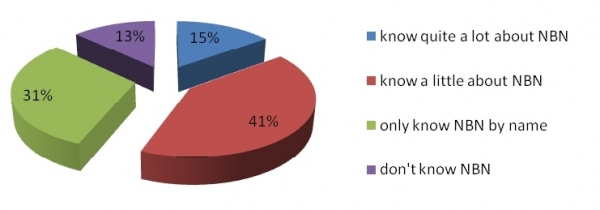
This article was designed to provide a factually-based comparison of the two plans. I hope it has shown why NBN Co’s plan is superior to the Coalition’s alternative. It’s likely that NBN Co will continue to completion, but it will interesting to see how NBN ultimately effects decision of Australian voters.


